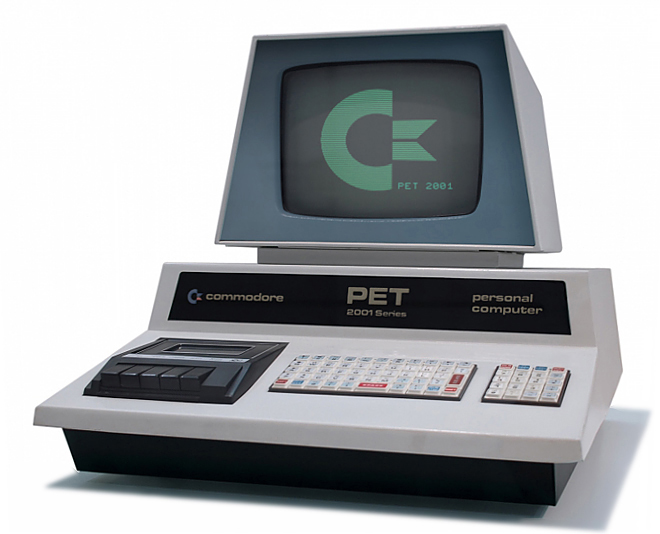 Commodore PET BETA
Commodore PET BETA Commodore PET BETA
Commodore PET BETAThe Virtual Keyboard
The keyboard graphic responds to mouse clicks, touch events, and key presses.
Hold your shift key while clicking the PET keyboard to get the graphics
characters or use the toggling shift keys on the virtual keyboard.
(The emulator simulates pressing the PET's left shift-key at the
same time as the clicked key.)
Using a real keyboard, the TAB key substitutes the up-arrow key of the PET and ALT/option + TAB the left-arrow key.
Keyboard Modes
There are two keyboard modes to be selected from the respective pop-up menu below the virual screen: One for editing, featuring emulated key repeat and convenient touch interaction, and a games mode, featuring an immediate keyboard response and multi-touch interaction as suitable for playing games games.
Active Cursor Positioning
Activate the checkbox "Touch-Cursor" for positioning the cursor freely on the screen by touches or clicks, while in edit mode. Especially useful for touch operated devices, like tablets, or for editing screen graphics.
Please note that this may result in unintended effects with programs that turn on the cursor while waiting for an INPUT or a GET statement. Hence, best disable this option while running a program.
Loading and Saving Programs
The emulator has an IEEE-488 device attached at address 8, which can be used to load and save (.prg) files.
To load program files that are on your local disk, first select the file with the browse button. Then type LOAD "NAME",8 into the PET. To save a program, type SAVE "NAME",8 and then you'll be prompted to save the file.
You may also drag and drop a .prg or .pet file onto the virtual PET's screen to load and auto-run the respective program.
(Note that IEEE-488 doesn't work very well with ROM version 1.)
Alternatively, you may also export a BASIC program currently in RAM as a binary PRG-file or as a portable source file in text format (converting any non-ASCII characters to CHR$-commands) by means of the "Export" menu. However, this will not be handled by the emulated PET, but by the emulator itself.
D64-disk images may be mounted either by the file-input or by drag-and-drop. The emulator will parse the disk image and present a file dialog to chose from. (You may bring up this dialog again by clicking the button "Disk Directory", shown to the left of the file-input button, once a disk image has been loaded.)
Finally, you may load or drag-and-drop text-files (with extensions .txt, .ba, .bas) of BASIC source text. The emulator will generate a tokenized BASIC program and load it into memory, but will not run it automatically. The source code may be either in lower case or in upper case (or even mixed). The usual abbreviations for commands are recognized (works best in lower case source texts).
Some PET games with hot-links to run them in this emulation can be found in this file list.
A large collection of .prg programs is to be found at www.zimmers.net/anonftp/pub/cbm/pet/ALLFILES.html. Take a look under demos/Cursor/ and games/.
ROMs and RAM
Some programs don't run on ROM1 or require more memory.
Changing the size of memory or changing the ROM version forces a reset of the PET.
Exporting Screen or Memory
Select an item from the "Export" menu to export any screen or memory contents.
The screen may be exported as:
— Unicode text, ready for copy-and-paste (mind that there isn't a Unicode equivalent for every PET character),
— a PNG image (with margins or without),
— a printer hard-copy (PNG image, dot-matrix style, black on white),
— a hex-dump of the screen memory,
— a BASIC program that will reproduce what is currently shown on the screen.
BASIC memory may be either exported as a listing in portable text format, converting any special characters in strings or PRINT-statements to CHR$(...)-sequences, as a hex-dump, or as a binary PRG-file.
Arbitrary memory ranges may be exported either as a hex-dump or in 6502 disassembly (both limited to the ranges of RAM and ROM).

Disk:
Drag or right-click to save